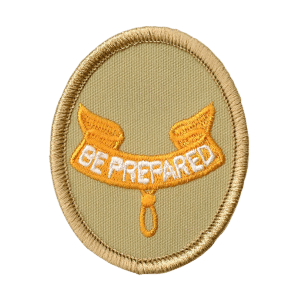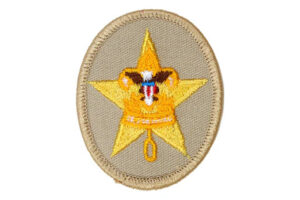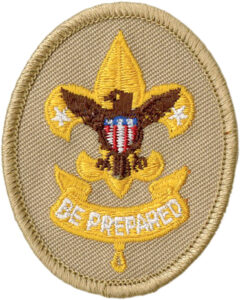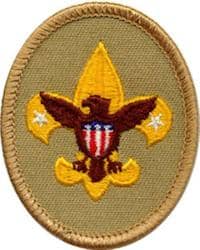Introduction
The Second Class rank builds upon the foundational skills you’ve learned as a Tenderfoot. By earning Second Class, you’ll continue to develop essential outdoor survival skills, first aid knowledge, and leadership qualities. You’ll also deepen your understanding of citizenship, personal fitness, and environmental stewardship. Achieving this rank is an important step toward becoming a well-rounded Scout, and it’s a key milestone on your journey to Eagle Scout.
Second Class Rank Requirements
1. Camping and Outdoor Ethics
- 1a. Participate in five separate troop/patrol activities, at least two of which include overnight camping.
- This is a continuation of the camping and outdoor skills you learned for Tenderfoot. To satisfy this requirement, you’ll need to camp with your troop or patrol at least two separate times.
- Tip: Make sure to actively participate in setting up the camp, preparing meals, and following Leave No Trace principles.
- 1b. Explain the principles of Leave No Trace and tell how you practiced them on a campout or outing.
- Scouts are expected to know the 7 principles of Leave No Trace:
- Plan ahead and prepare
- Travel and camp on durable surfaces
- Dispose of waste properly
- Leave what you find
- Minimize campfire impacts
- Respect wildlife
- Be considerate of other visitors
- Tip: Show how you’ve incorporated these principles into your outdoor activities.
- You can learn more about leave now trace here.
- Scouts are expected to know the 7 principles of Leave No Trace:
- 1c. On one of these campouts, select your patrol site and sleep in a tent you have pitched.
- Pitching your own tent is an essential skill. Make sure you know how to choose a safe and appropriate campsite.
- Tip: Practice setting up your tent before going on a campout. Know how to handle different terrain and weather conditions.
2. Navigation
- 2a. Explain how a compass works and how to orient a map. Use a map and compass together.
- Learn how to use a compass in conjunction with a topographic map to find your way in the wilderness. Practice orienting the map so that it matches the terrain around you.
- Tip: During a troop meeting or outing, ask your troop leader to help you practice these skills in the field.
- 2b. Using a compass and map together, complete a five-mile hike approved by your leader.
- The five-mile hike is an opportunity to use your map and compass skills in the real world. Follow a designated route with your patrol or troop, ensuring you can navigate effectively.
- Tip: Bring your compass and map to each hike so you can practice.
3. Aquatics
- 3a. Tell what precautions must be taken for a safe swim.
- Safety in the water is critical. Learn the Safe Swim Defense principles, which include: qualified supervision, buddy system, and proper equipment.
- Tip: Study the BSA Safe Swim Defense Plan in detail, which includes guidelines for pool and open-water swimming.
- 3b. Demonstrate your ability to swim 50 yards in a strong manner, using front crawl, sidestroke, breaststroke, or elementary backstroke.
- You will need to demonstrate proficiency in a swim stroke of your choice over a distance of 50 yards.
- Tip: Practice regularly at a pool or lake to build your stamina and refine your swimming technique.
- 3c. Demonstrate water rescue methods and explain when they should be used.
- Learn basic water rescue techniques, such as the reach, throw, row, go method. Explain when each method should be used based on the situation.
- Tip: Volunteer to help during swimming activities to practice these skills.
4. First Aid and Emergency Preparedness
- 4a. Show what to do for “hurry” cases of stopped breathing, stroke, severe bleeding, and ingested poisoning.
- You’ll need to demonstrate proper procedures for handling serious first aid situations, such as performing CPR or using pressure to stop bleeding.
- Tip: Take first aid training seriously, and practice these skills often so you’re confident in an emergency.
- 4b. Demonstrate first aid for injuries or illnesses, including blisters, burns, sprains, and bites.
- Learn how to treat common outdoor injuries that you might encounter during camping or hiking.
- Tip: Build a personal first aid kit to carry with you on outings and learn how to use each item in it.
5. Fitness
- 5a. Complete the exercises in Tenderfoot rank requirement 6a. Keep track of your best record in the following areas: push-ups, sit-ups, standing long jump, and a 1-mile run.
- You’ll need to continue tracking your physical fitness progress. This will help you build strength and endurance.
- Tip: Regularly practice these exercises at home or during troop activities to improve your fitness level.
6. Citizenship
- 6a. Identify or show on a map your community’s emergency services.
- Understand the layout of your community, including where the fire department, police station, and hospitals are located.
- Tip: You could use Google Maps or a physical map to mark these key locations.
- 6b. Participate in an approved service project of at least one hour.
- Service to others is a fundamental part of Scouting. Join your troop in a community service project and document your contributions.
- Tip: Get involved in local clean-up efforts, helping at shelters, or other projects your troop organizes.
7. Leadership
- 7a. Demonstrate how a compass and GPS device can be used to navigate.
- This requirement emphasizes the ability to navigate using both traditional tools like compasses and modern GPS devices.
- Tip: Learn how to program a GPS device for different routes and compare its use to a map and compass.
8. Personal Safety and Security
- 8a. Participate in a discussion about your rights and responsibilities as a citizen, and how you can show respect for the flag of the United States.
- You’ll need to understand your role as a responsible citizen, including respecting the U.S. flag and knowing your basic rights.
- Tip: Learn how to properly display and fold the flag.
9. Scout Spirit
- 9a. Demonstrate Scout spirit by living the Scout Oath and Scout Law in your everyday life.
- Your actions, both in and outside of Scouting, should reflect the values of the Scout Oath and Law.
- Tip: Document how you’ve been helpful, kind, or obedient in various situations to show Scout spirit to your counselor.
Conclusion
Earning the Second Class rank is an exciting and rewarding step in your Scouting journey. By focusing on building core skills in camping, first aid, and citizenship, you’ll gain more confidence and independence. With careful planning and participation in troop activities, you’ll be well on your way to achieving Second Class and advancing toward the higher ranks in Scouts BSA.
Good luck, and remember to be prepared!





